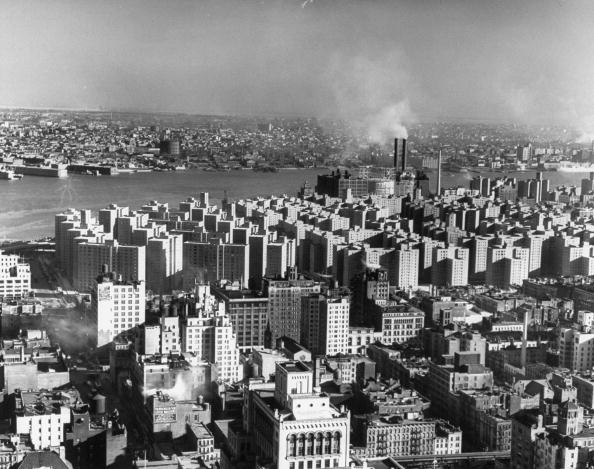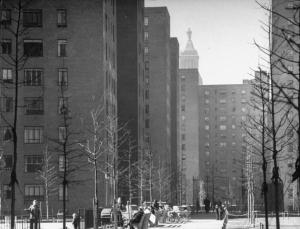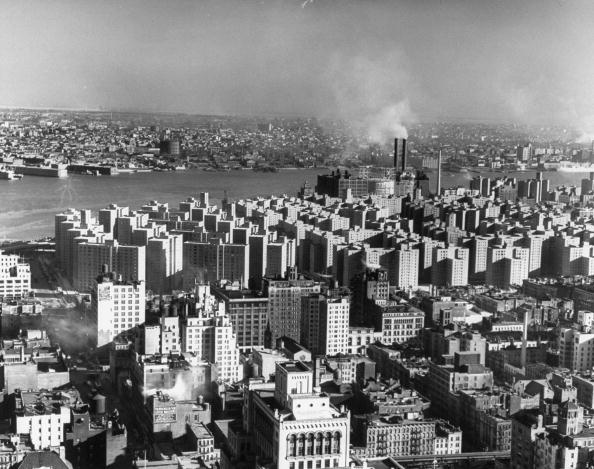Old New York: Stuyvesant Town-Peter Cooper Village
By Jennifer Henderson September 15, 2014 4:00 pm
reprints

Stuyvesant Town-Peter Cooper Village—From the Vault
1945-1947
MetLife develops Stuyvesant Town-Peter Cooper Village, largely aimed at housing returning World War II veterans. The over 11,000 units span 80 acres on Manhattan’s East Side.
1954-1965
Mayor Robert Wagner champions public housing for lower and middle-income residents modeled after privately funded developments like Stuy Town. This call for housing constitutes the “war on slums.”
1974
A contract between MetLife and the city expires after 25 years. The agreement has kept rents in Stuy Town lower than they otherwise would have been through MetLife’s tax abatement and limited profits. A 10-year extension on the tax abatement and rent stabilization of Stuy Town, however, limits the immediate threat of rising rents.
1991-1997
Faulty windows installed at Stuy Town create rent controversy when landlord MetLife is granted an increase to cover the $30 million cost of replacement. MetLife eventually agrees to refund $4 million in rent to tenants. Monthly rents for two-bedroom units largely fall under $800.
2006
MetLife announces the sale of Stuy Town for $5.4 billion to a joint venture between Tishman Speyer and BlackRock Realty. The buyers plan to increase rents through major capital improvements. New ownership spends $6.3 billion on the property purchase with $4.4 billion in loans and $1.9 billion from investors. A consortium of senior lenders provides $3 billion of the debt in CMBS loans, with the balance in mezzanine loans. The deal is the largest real estate transaction by dollar amount in American history.

2010
Tishman Speyer and BlackRock default on the $4.4 billion in debt, after a lawsuit blocks them from raising rents. Senior lenders on the property take control of the development, and are represented by special servicer CWCapital Asset Management.
2013
Barclays PLC appraises Stuy Town for $3.4 billion—significant growth from the 2010 figure of $2.8 billion.
2014
CWCapital cancels an auction for Stuy Town as it exercises a deed in lieu of foreclosure and pays $130 million in city and state taxes to thwart an outside investor from seizing the complex. CWCapital considers a sale of the development, and is sued by lenders, which allege that $1 billion has been retained rather than distributed to empty-handed junior lenders.
CWCapital (owned by Fortress Investment Group) also faces push back from the de Blasio Administration, which wants to keep rents affordable at the historically middle-income neighborhood. Senator Charles Schumer says Fannie Mae and Freddie Mac agree to refuse financing for deals not supported by Stuy Town tenants.


